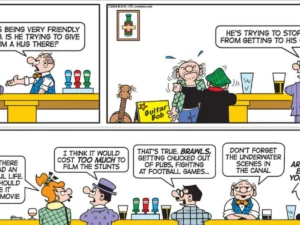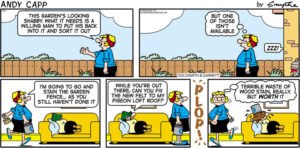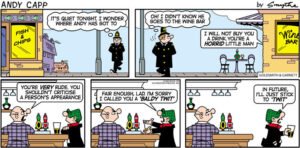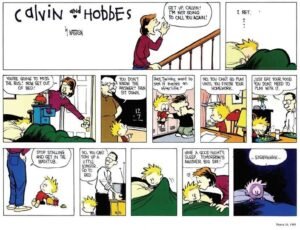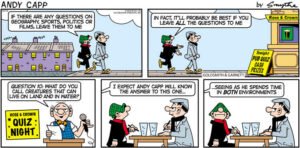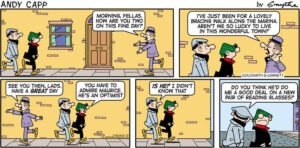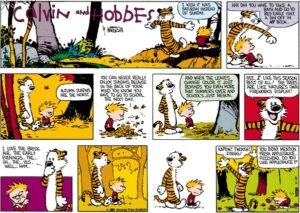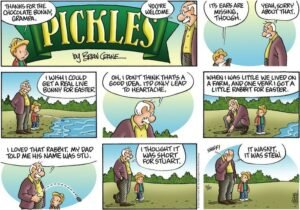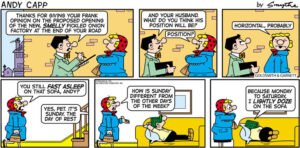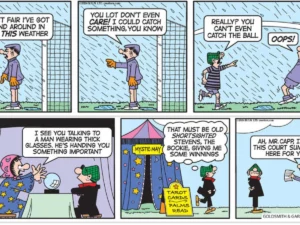Do you remember the feeling? The rustle of the Sunday newspaper, the smell of fresh ink, and the sheer, unadulterated joy of finding that one, full-color strip. For millions of us, that strip was Calvin and Hobbes . It wasn’t just a comic;
Decades have passed. The newspapers are thinner, the ink smells different, and the world has spun on at a dizzying pace. Yet, if you pull out one of those treasured collections or scroll through a digital archive, something magical happens. The years melt away. The laughter bubbles up, fresh and genuine. The wisdom lands with the same gentle thud it always did. This is the enduring power of Bill Watterson’s masterpiece. and they never, ever get old. ❤️
18+ Calvin and Hobbes Comics That Never Get Old
#1
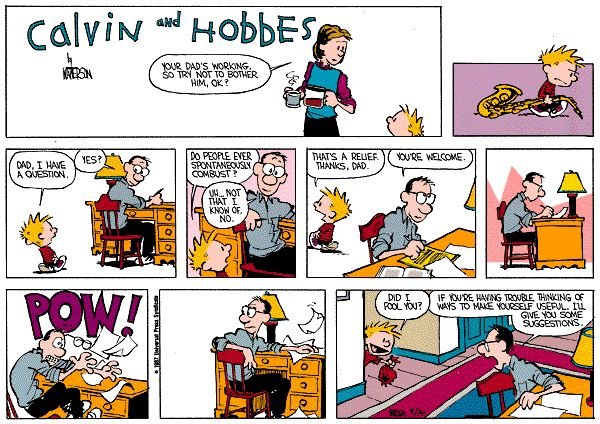
#2
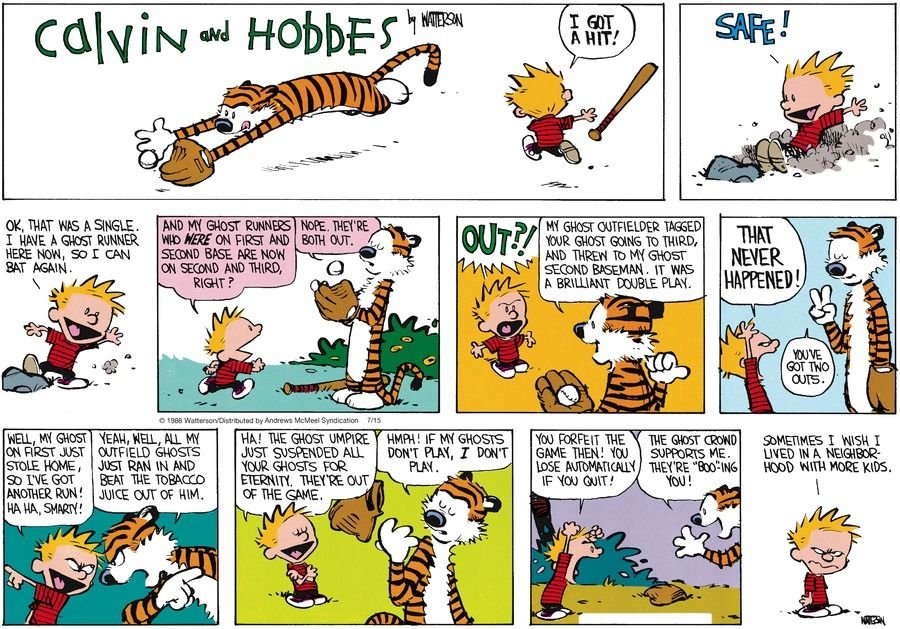
#3
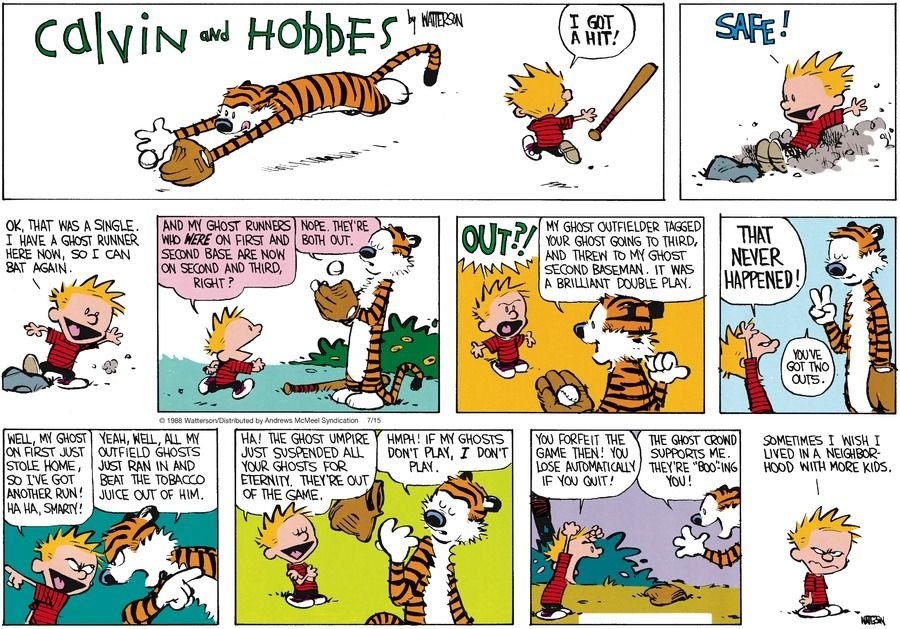
#4
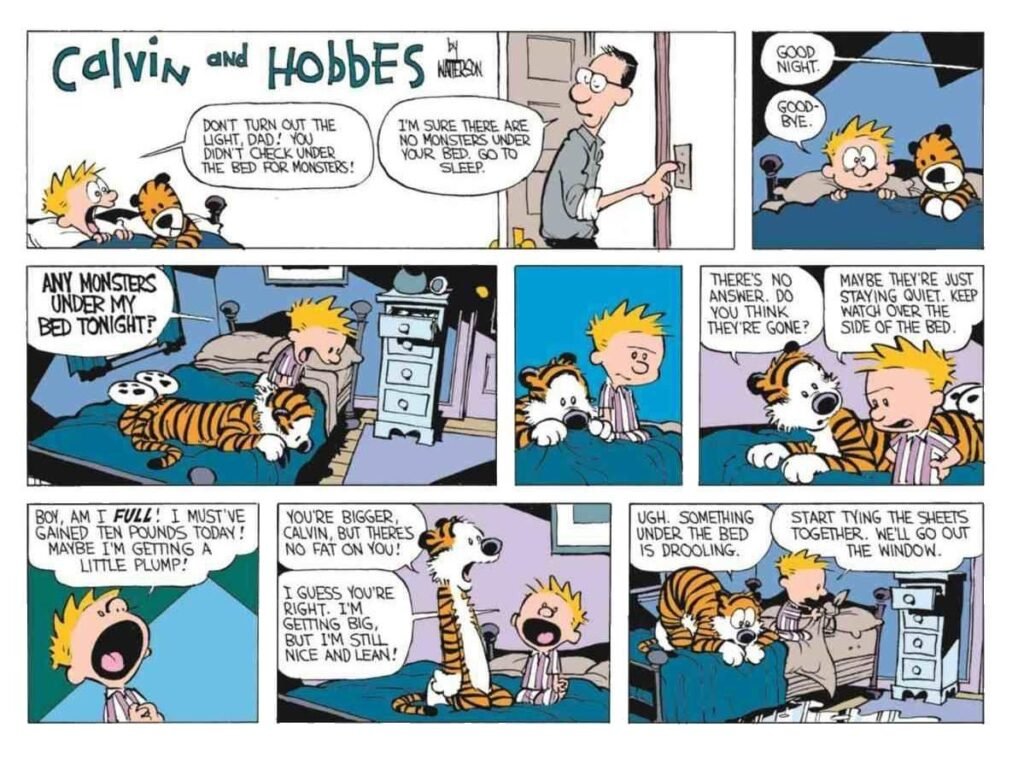
#5
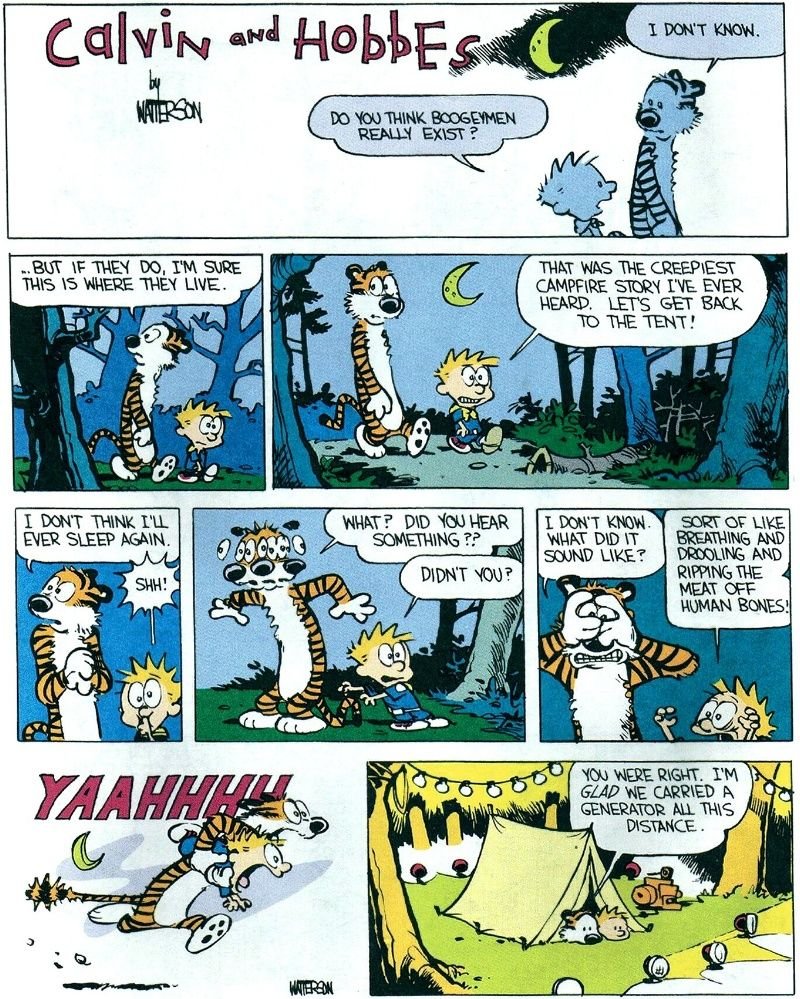
#6
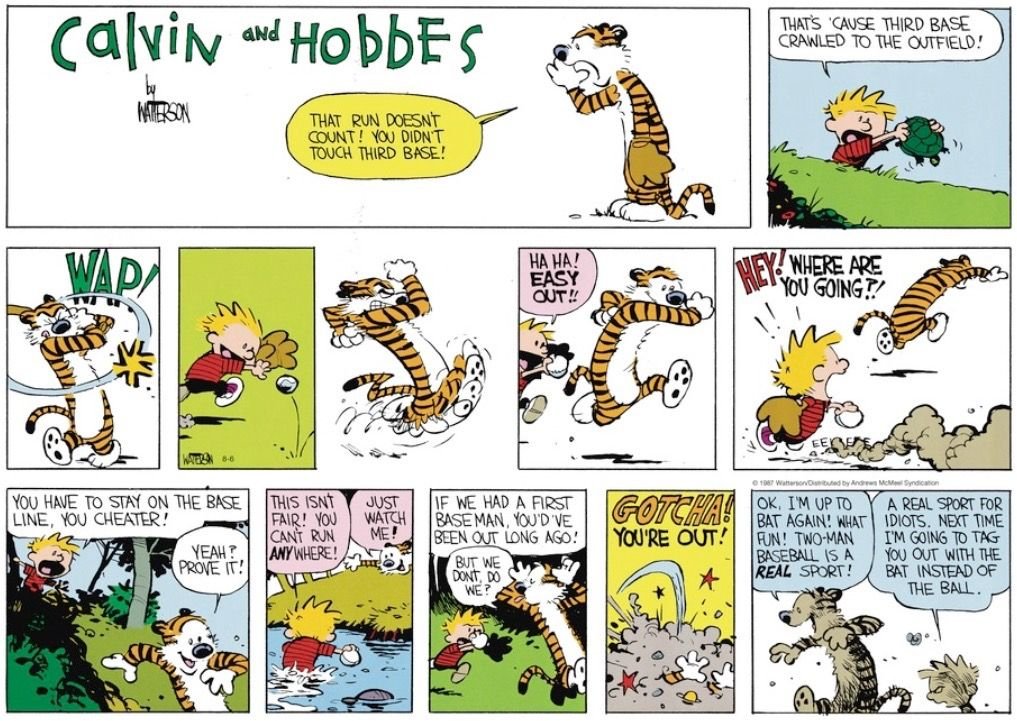
#7
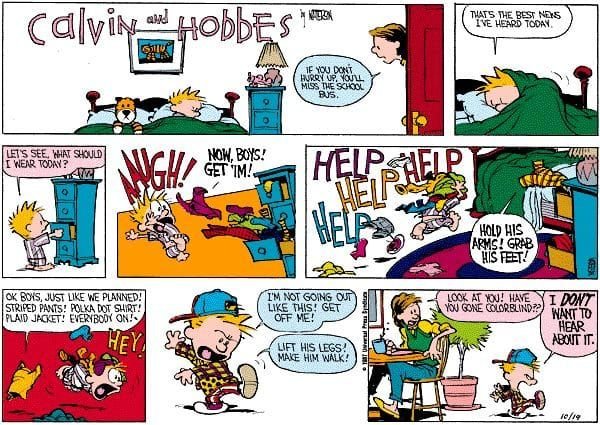
#8
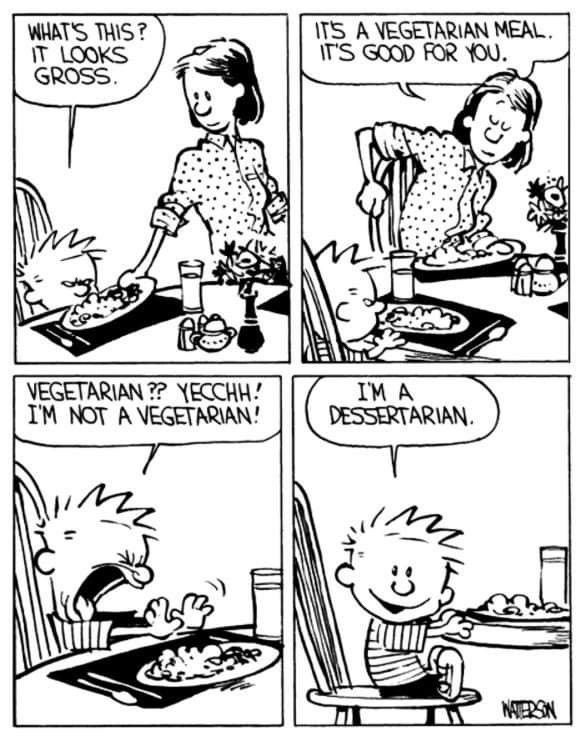
#9
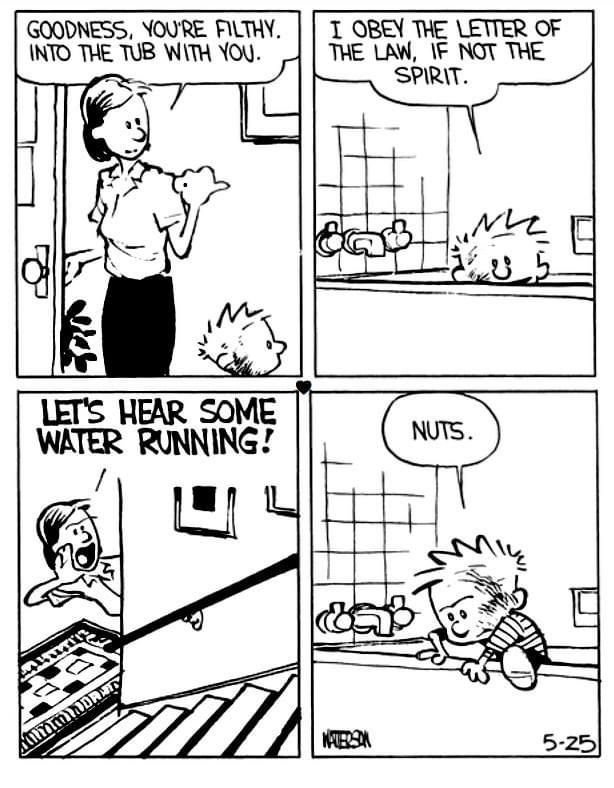
#10
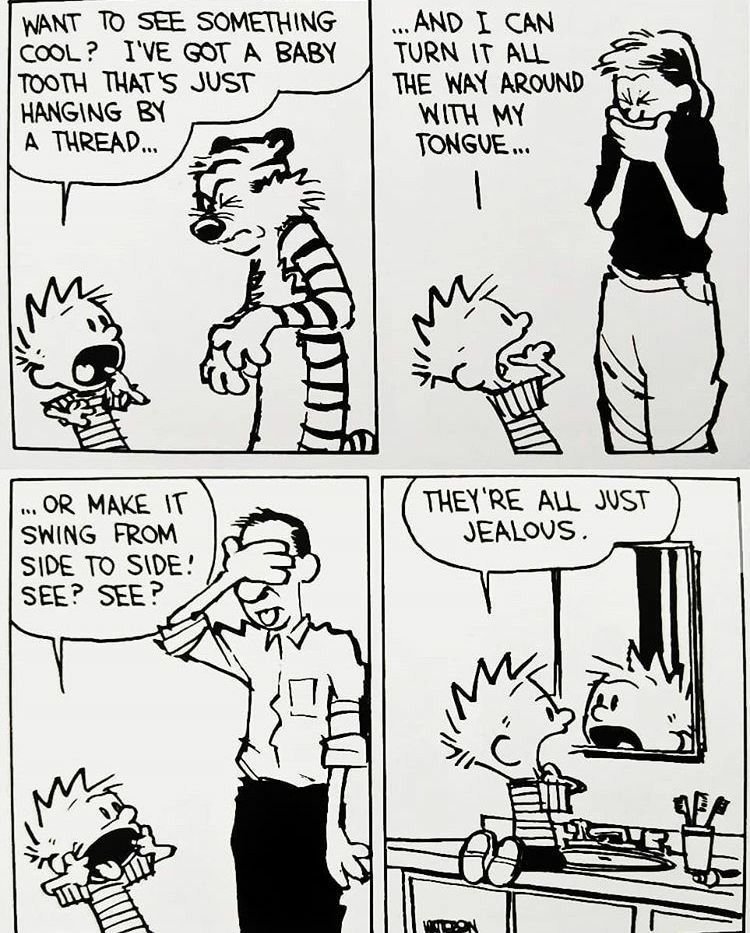
#11
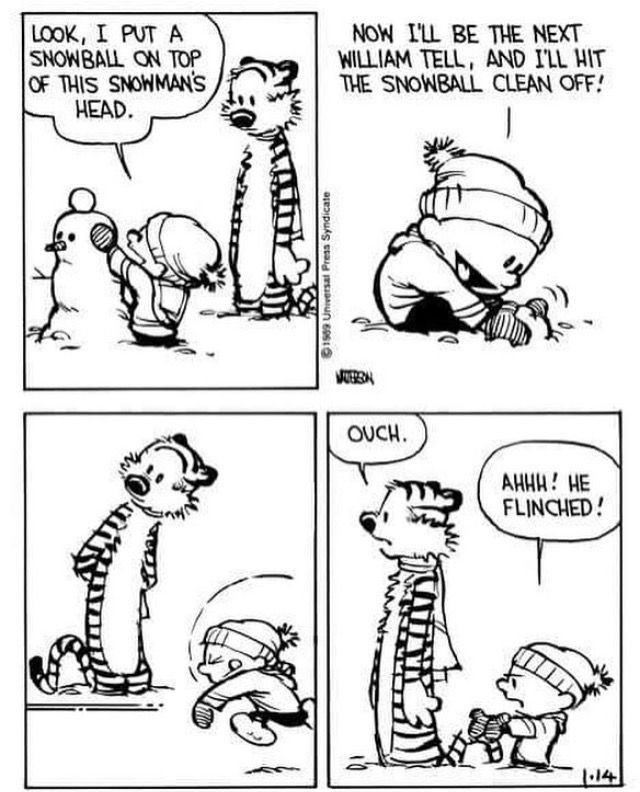
#12
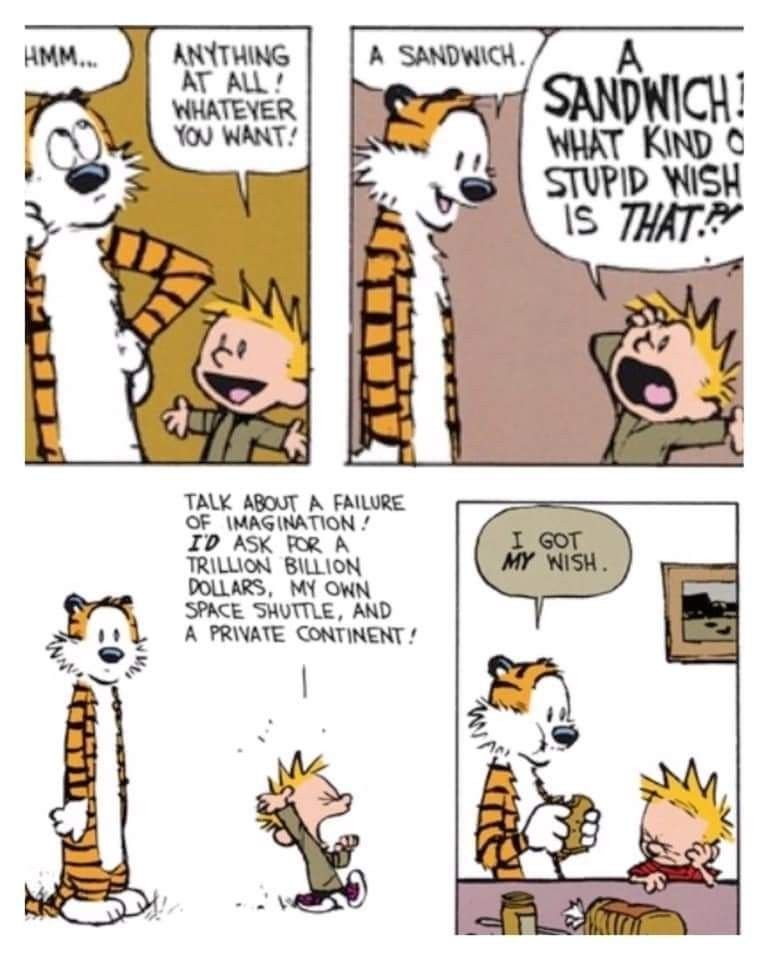
#13
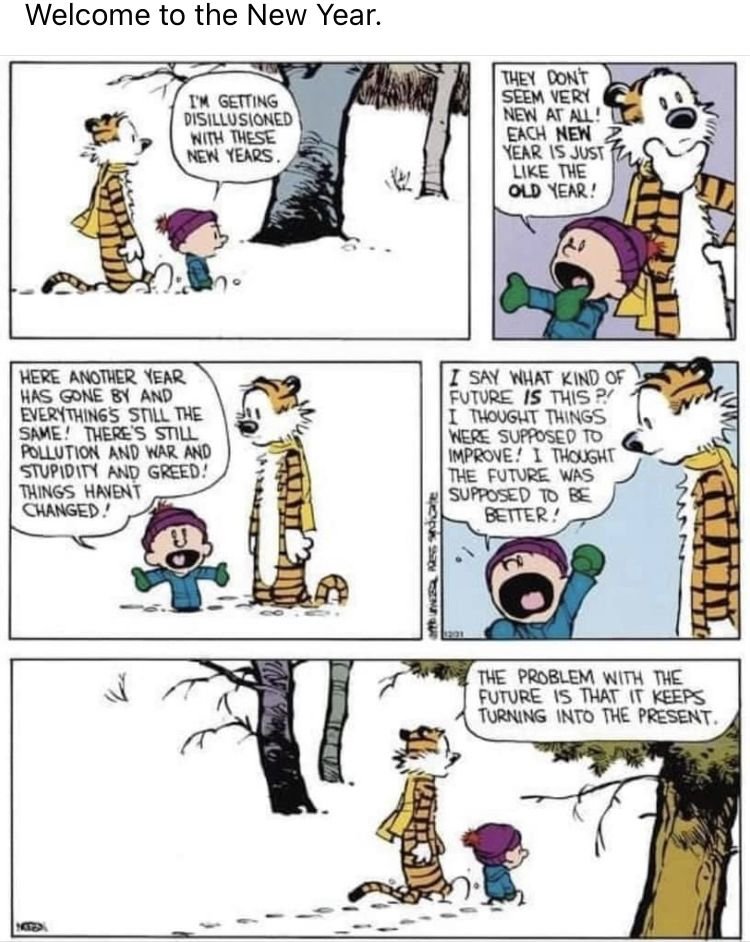
#14
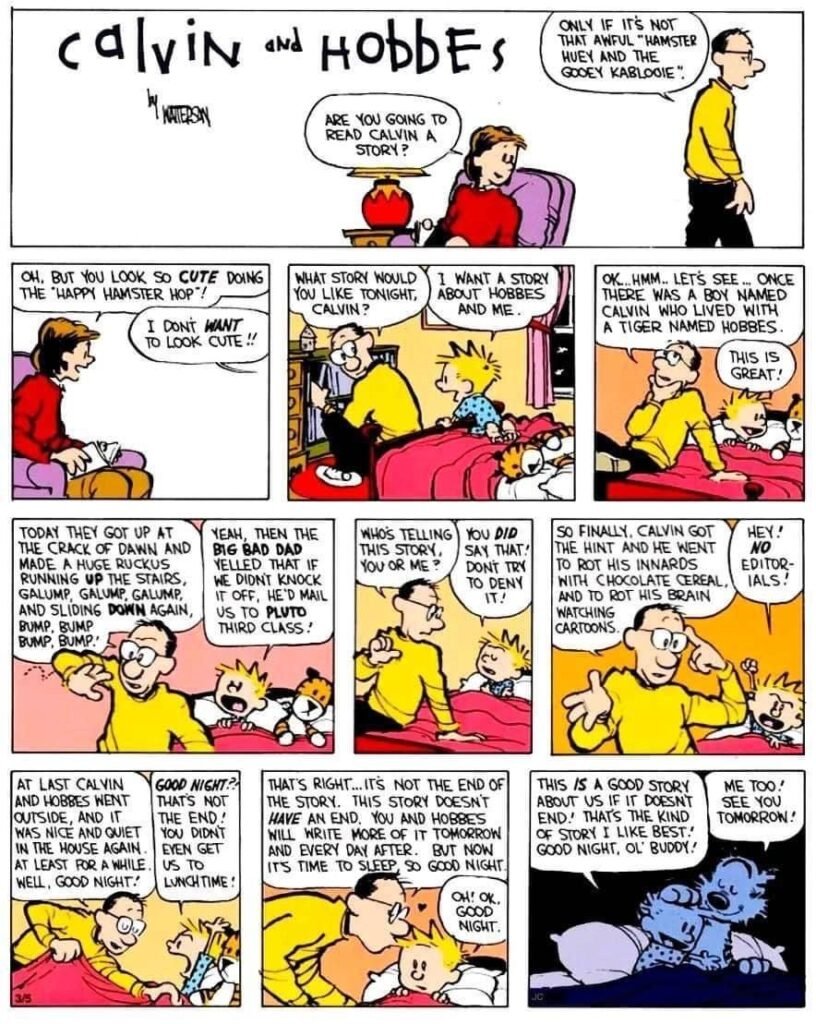
#15
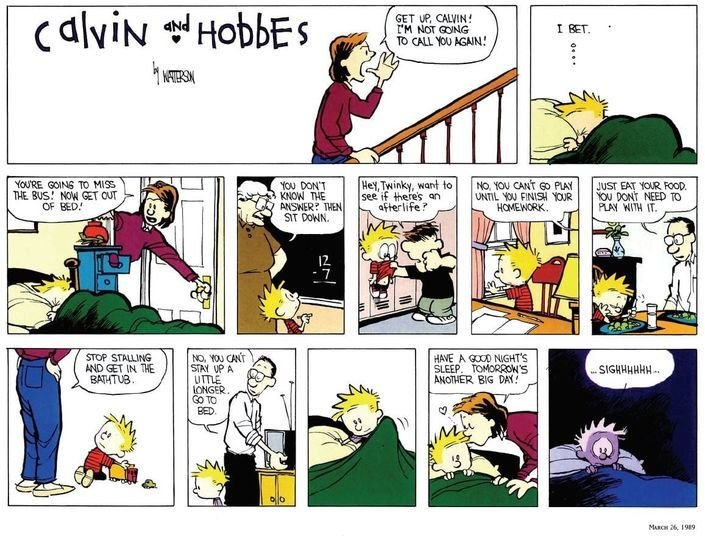
#16
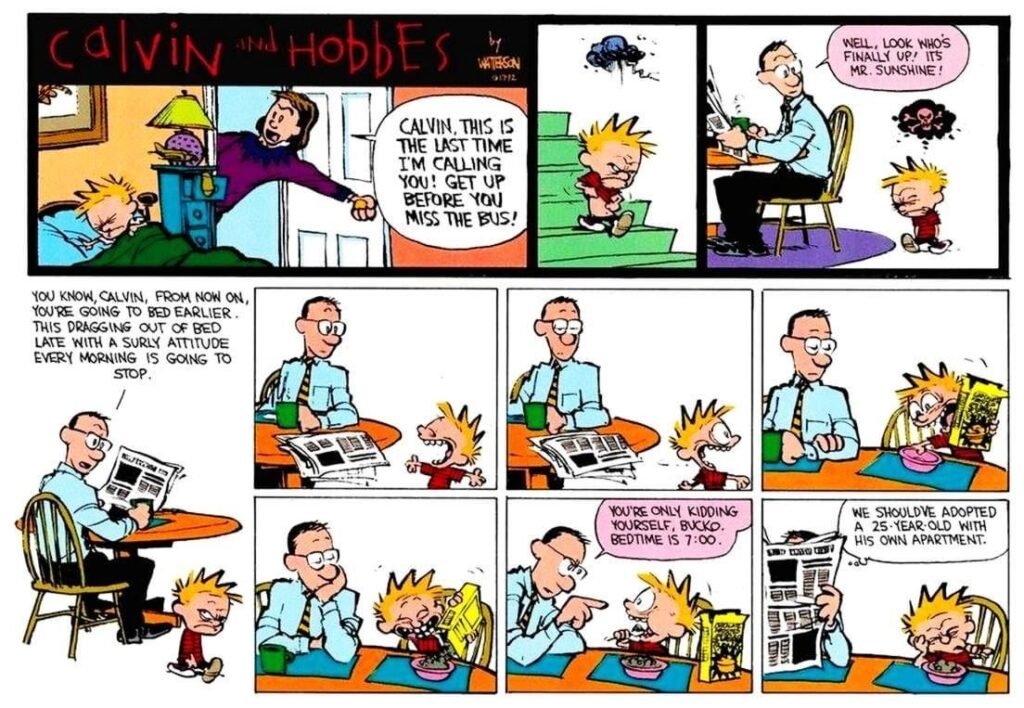
#17
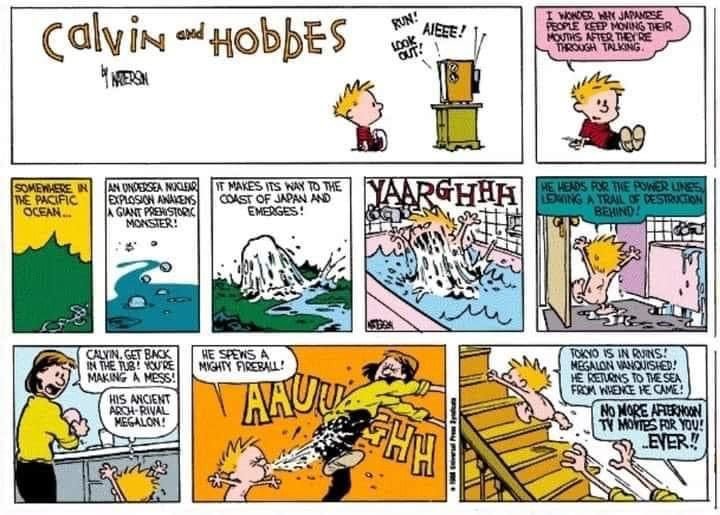
#18
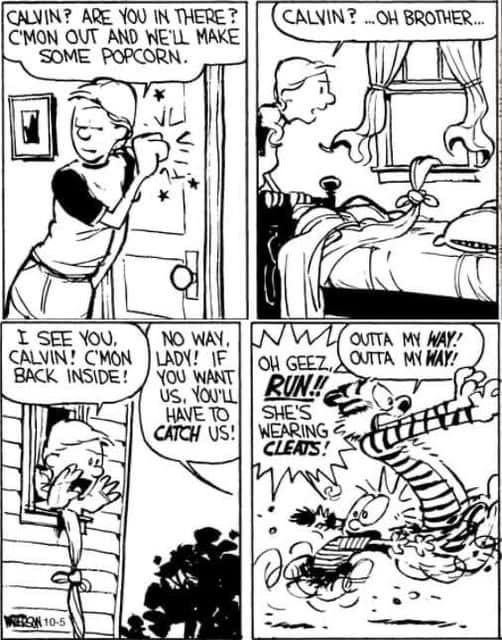
#19
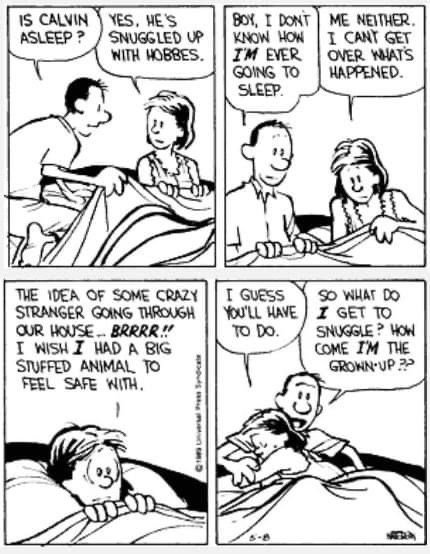
#20
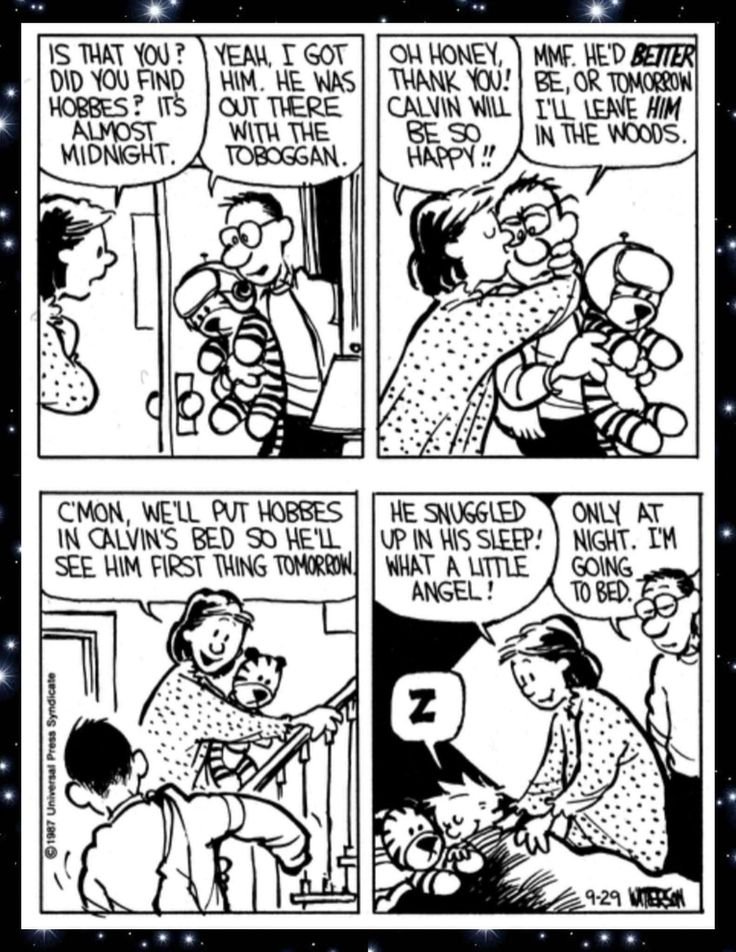
The Timeless Magic of a Boy and His Tiger
At its heart, Calvin and Hobbes is about a relationship. It’s the pure, unbreakable bond between a six-year-old boy with a boundless imagination and his philosophical, sarcastic, and fiercely loyal tiger. But to call Hobbes a “stuffed animal” is to miss the point entirely. To Calvin, he is real.
The genius of the strip lies in its beautiful duality. We see what everyone else sees: a boy talking to a toy. But we are also invited into Calvin’s world, where Hobbes is a pouncing, witty, and very much alive tiger. This isn’t a trick; it’s a celebration of childhood itself. It’s a reminder of a time when the line between reality and imagination was beautifully, thrillingly blurred. We all had our own Hobbes, whether it was a teddy bear, an imaginary friend, or just the secret worlds we built in our backyards. Watterson gave that feeling a name and a face, and in doing so, he made us all feel seen. The magic isn’t just in the jokes; it’s in the profound truth that what we believe in, what we love with all our heart, is real in the only way that truly matters. 🐯
Finding the Philosopher in a Six-Year-Old
You’d expect a comic about a six-year-old to be full of potty humor and simple gags. And while Calvin certainly has his share of mischievous fun, the strip is surprisingly, and often breathtakingly, deep. Tucked between snowball fights and wagon rides are profound meditations on life, art, nature, and the human condition.
Calvin, in his precocious way, becomes our guide. He grapples with the meaning of existence while staring at the stars. He questions the hypocrisy of adults through his cynical alter-ego, Spaceman Spiff. He debates the nature of art with Hobbes as he builds a grotesque snowman. And he delivers gut-punch observations about the state of the world that feel more relevant today than ever.
One of the most poignant recurring themes is the GROSS (Get Rid Of Slimy girlS) club , a hilarious parody of adult institutions and bureaucracy. But beneath the surface, it’s about friendship, loyalty, and creating your own world with its own rules. Through Calvin’s eyes, we are reminded that the biggest questions in life don’t require a PhD to ask. They just require a quiet moment, a good friend to listen, and the courage to look at the world and ask, “Why?” 🤔
The Art of Wonder: More Than Just a Drawing
You can’t talk about Calvin and Hobbes without talking about the art. Bill Watterson is a master of the form, and his illustrations are a character in their own right. The strip wasn’t confined to a few static boxes. Watterson broke the panel boundaries, letting Calvin and Hobbes’s adventures spill out across the page.
Who can forget the epic Calvinball games, a whirlwind of chaotic energy and nonsensical rules captured in dynamic, sprawling drawings? Or the quiet, breathtaking beauty of a single panel showing Calvin and Hobbes sledding down a hill through a silent, snow-covered forest? These weren’t just drawings; they were experiences. You could almost feel the crisp winter air on your cheeks and hear the crunch of the snow under the sled’s runners.
The art gave the strip its soul. It conveyed the sheer joy of a downhill run, the terrifying thrill of a dinosaur attack, and the peaceful contentment of a lazy afternoon in a treehouse. It was a visual language that spoke directly to our hearts, reminding us of the wonder that can be found in both the grandest adventures and the simplest moments. Watterson’s brush didn’t just draw characters; it drew feelings. 🎨
The Enduring Lessons from the Trenches of Childhood
Why do these comics resonate so deeply, even when we’re long past the age of building forts and having imaginary friends? Because the lessons are universal. They are the fundamental truths of being human, just viewed through the lens of a brilliant, chaotic child.
- The Importance of Play: Calvin is a champion of unstructured play. His life is a series of grand adventures, and he teaches us that play isn’t just for kids. It’s how we learn, how we cope, and how we stay connected to the most creative parts of ourselves. In a world that values productivity above all else, Calvin is a rallying cry to go outside, make a mess, and have some fun. 🛷
- Questioning Authority: Calvin’s constant battles with his parents, his teacher Miss Wormwood, and the dreaded babysitter Rosalyn are hilarious, but they’re also a vital lesson in critical thinking. He refuses to accept things at face value and challenges the “because I said so” logic of the adult world. He reminds us to stay curious and to never stop asking “why.”
- The Power of Friendship: The relationship between Calvin and Hobbes is the bedrock of the entire strip. It’s a testament to the idea that true friendship sees past the superficial and connects on a deeper level. They fight, they tease, they scheme, but they are always there for each other. It’s the kind of loyal, unwavering bond we all crave.
A Lasting Legacy: Why We Still Need Calvin and Hobbes
In an age of fleeting digital content and 15-second videos, Calvin and Hobbes stands as a monument to thoughtful, enduring storytelling. It’s a warm blanket on a cold day, a familiar friend you can always revisit. It’s a reminder to slow down, to look at the world with a sense of wonder, and to never, ever lose touch with the little kid who still lives inside us all.
The strip ended its run in 1995, but its spirit is immortal. It lives on in every person who finds joy in a rainy day, who has a deep conversation with a pet, or who looks at a blank patch of snow and sees a canvas for a masterpiece. Calvin and Hobbes didn’t just give us laughs; they gave us a lens through which to see the world—a little more strange, a little more beautiful, and a lot more interesting. They are, and always will be, timeless. ✨
Related Heading: Your Turn to Share the Sled Ride
The world of Calvin and Hobbes is so personal and so special to each of us. It’s a shared memory that feels uniquely our own. The stories that stick with us, the strips that made us laugh out loud or pause and think, are a part of who we are.
So now, I want to turn the page over to you. Which Calvin and Hobbes comic strip is the one that you can never forget? Is it the one with the snowman art gallery? The time they tried to build a transmogrifier? Or maybe a quiet, heartfelt moment between the boy and his tiger that just hit you right in the feels? stories! 👇
